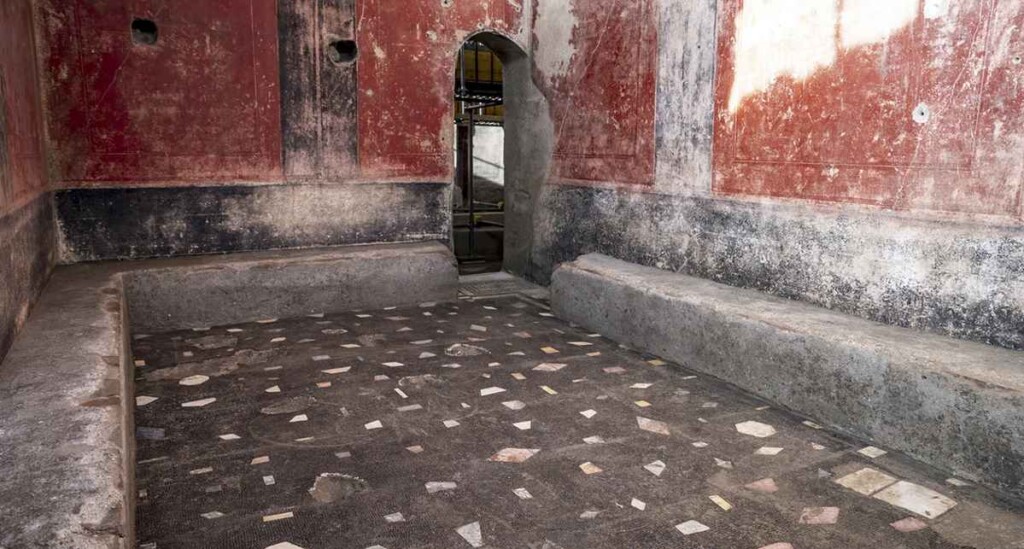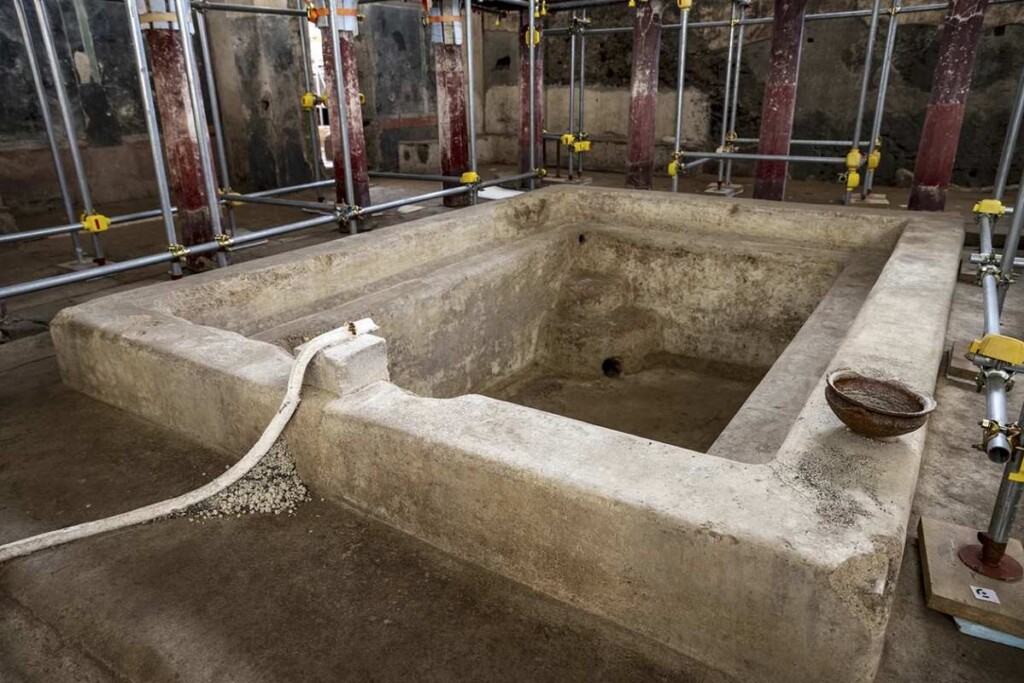
Though it is a pretty standard piece of Roman civicscape, a spa unearthed in Pompeii is dazzling archaeologists with its level of detail and preservation.
Decorated in sumptuous mosaics and featuring hot and cold rooms as well as bathing pools, the spa was found in a largely unexplored region of the Pompeii site called Regio IX.

Several major discoveries in the last 4 or 5 years have come from Regio IX, which is revealing so much about how the Classical Romans lived, organized society, and vied for power.
“We have here perhaps the largest thermal complex in a private house in Pompeii,” said Gabriel Zuchtriegel, director of the Pompeii archaeological park. “The members of the ruling class of Pompeii set up enormous spaces in their homes to host banquets.”
“It was an opportunity to show the wealth in which they lived and also to have a nice thermal treatment,” he explained to AP.
The spa had a cold pool and a steam room. In total 30 people could do a full bathing and steaming routine before a banquet, which Zuchtiegel said was the typical order of an important evening.
POMPEII PROVIDES:
Having a spa in your house was a great way of impressing those needing to be impressed, but the Romans were masters of pre-motorized hydraulics, and such installations were more normal than might be supposed.
The Baths of Antoninus (Pious) built overtop the ruins of Carthage in North Africa, could accommodate hundreds of bathers, had swimming pools meant for exercise as well as relaxation, and multiple hot and cold rooms accessible exclusively from male and female changing rooms.
Evidence of underfloor furnaces and other devices to heat and move water has been found in many Roman villas, such as those in Bath, Somerset, or Sirmione, in Lombardy.
SHARE This Latest Wonderful Discovery With Your Friends Who Love The Romans…
